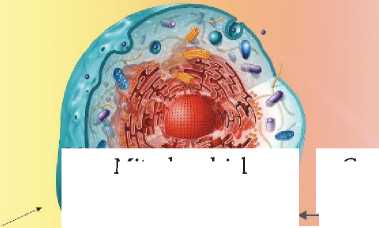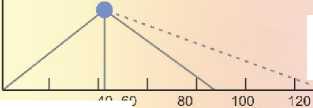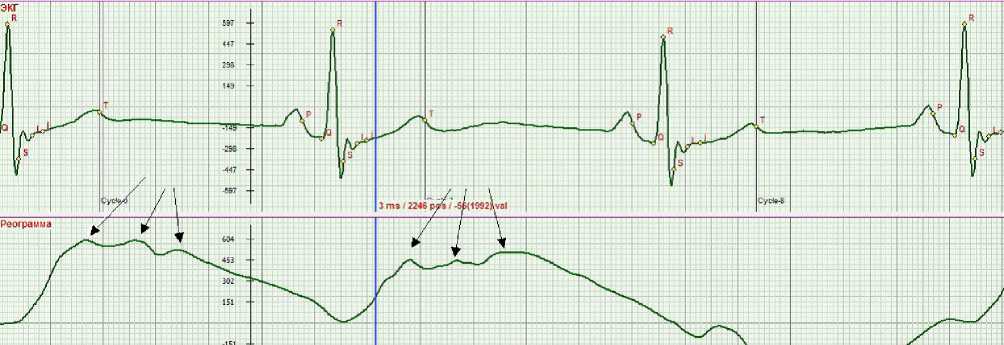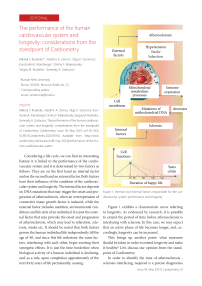The performance of the human cardiovascular system and longevity: considerations from the standpoint of cardiometry
Автор: Rudenko M.Y., Zernov V.A., Voronova O.K., Mamberger K.K., Makedonsky D.F., Rudenko S.M., Garbuzov G.A.
Журнал: Cardiometry @cardiometry
Статья в выпуске: 18, 2021 года.
Бесплатный доступ
Considering a life cycle, we can find an interesting feature: it is linked to the performance of the cardiovascular system and it is determined by two factors as follows.
Human cardiovascular system, longevity
Короткий адрес: https://sciup.org/148321534
IDR: 148321534 | DOI: 10.18137/cardiometry.2020.18.910
Текст научной статьи The performance of the human cardiovascular system and longevity: considerations from the standpoint of cardiometry
Imprint
Mikhail Y. Rudenko, Vladimir A. Zernov, Olga K. Voronova, Konstantin K. Mamberger, Dmitry F. Makedonsky, Sergey M. Rudenko, Gennady A. Garbuzov. The performance of the human cardiovascular system and longevity: considerations from the standpoint of Cardiometry. Cardiometry; Issue 18; May 2021; p.9-10; DOI: 10.18137/cardiometry.2020.18.910; Available from: http://www.
Considering a life cycle, we can find an interesting feature: it is linked to the performance of the cardiovascular system and it is determined by two factors as follows. They are on the first hand an internal factor and on the second hand an external factor. Both factors have their influence of the condition of the cardiovascular system and longevity. The internal factor depends on DNA mutations that may trigger the onset and progression of atherosclerosis, when an overexpression of connective tissue growth factor is induced, while the external factor includes nutrition, environmental conditions and life style of an individual. It is just the external factor that may provoke the onset and progression of atherosclerosis, which may lead to infarction, sclerosis, stroke etc. It should be noted that both factors govern the human individual life independently till the age of 40, and since this life milestone the same factors, interfacing with each other, begin exerting their synergetic effects. It is just the time borderline when biological activity of a human individual is declining, and, as a rule, upon completion approximately of the next forty years of life permanently, ceasing.
Atherosclerosis
External factors
Cell membrane
Hypertension Stroke Infarction

Mitochondrial metabolism processes
Genome expression
Mutations of decreases mithochondrial DNA «
Sclerosis
Internal factors
Cell functions

Years of life
40 60
Duration of happy life
Figure 1. Internal and external factors responsible for the cardiovascular system performance and longevity
Figure 1 exhibits a characteristic curve referring to longevity. As evidenced by research, it is possible to extend the period of time before atherosclerosis is interfacing with sclerosis. In this case, we may expect that an active phase of life becomes longer, and, accordingly, longevity can be increased.
This brings up another point: what measures should be taken in order to extend longevity and make it healthy? Let’s discuss our opinion from the standpoint of Cardiometry.
In order to identify the time of atherosclerosis -sclerosis interfacing, required is a precise diagnostics
Issue 18. May 2021 | Cardiometry | 9

Figure 2

Figure 3
of the cardiovascular system performance. According to Cardiometry, the criterion for the sclerosis diagnosis is the appearance of the multiple P waves on an ECG curve that should be attributed to a loss of elasticity by the cardiac muscle fibers. As a consequence, the ventricles are filled with blood in diastole due to pumping supply provided by the atria only that results in the appearance of the multiple P waves on an ECG curve (see Figure 2 herein). Two or three P waves are recorded in this case on ECG, depending on the degree of loss of elasticity by the cardiac muscle fibers. Upon reaching the specified level of the pressure in the ventricles, the SA node is activated, and the QRS complex is formed.
An assessment of atherosclerosis is a composite subject. Primarily it is provided by the criteria “signs of thrombosis”, which may be revealed on a Rheo curve in its diastolic portion. Another marker is a three-peak Rheogram, when three vertices are found on a Rheo curve (see Figure 3 herein).
The respective prevention and treatment measures can be simple enough. It should be noticed that sclerosis is linked with a DNA mutation, and this is an age-related factor, which may be inhibited by inducing genome expression. Our studies have demonstrated that the latter can be successfully achieved with the use of medical therapy device EZh-2, applying low-intensity EMF effects, which has been developed and manufactured in Russia. The specific EMF parameters produced by the device have been defined on the basis of the theory of basic adaptation reactions discovered by Russian scientist L.Garkavi. The EMF frequencies generated by the above original therapy device have been selected from spectral characteristics of the normal human ECG. The applicable clinical trials have confirmed a high efficacy and absolute safety in use of the original device.
In regard to atherosclerosis, it should be mentioned there are a variety of factors responsible for its onset and progression. In this connection, we call attention to application of the EZh-2 device to effectively prevent atherosclerosis development. Another reasonable prevention measure can be use of the Diosklephyt product manufactured by VITAUCT: it is capable of normalizing the HDL and LDL levels and controlling calcinosis. In this case, respiration-related exercises to normalize the oxygen - carbon dioxide balance in blood are of importance. It is a prerequisite to provide the proper elasticity of blood vessels.
Some other means and measures can be involved for this purpose, but our idea is to highlight the most attractive tools. Our long-term studies have shown that it may result in an increase of longevity to target active healthy life expectancy of 95 years. Now we continue our investigations in this research area. However our obtained evidence data support our conclusion on efficacy of the above mentioned diagnostics and therapy techniques.


